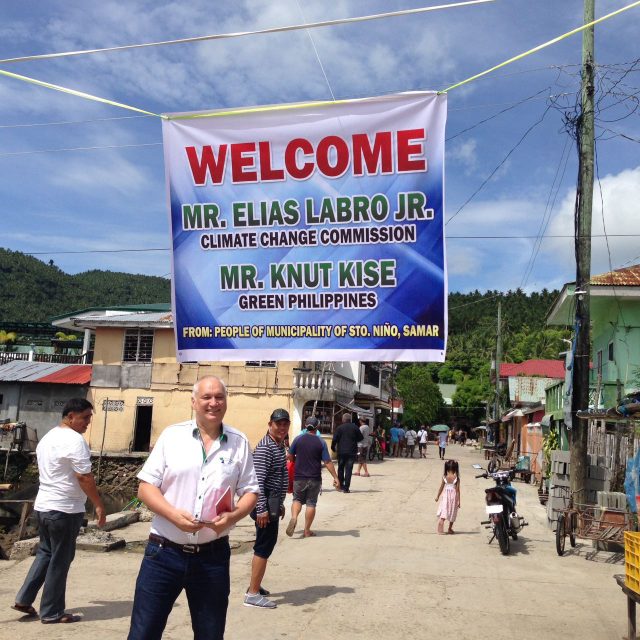This article originally appeared in the Norway-Asia Business Review.
Many islands in Southeast Asia rely on gas powered generators for electricity. These are problematic for a number of reasons. However, one firm may have found a way to power islands with renewable electricity.
It was during a trip to Santo Niño in the Philippines when Knut Kise, President of Spirit Electricity, began to see a potential solution to powering small islands in remote locations. His team was there to promote solar power to the island community which up until that point had been entirely reliant on diesel power.
Kise explained the islands of Santo Niño only had electricity for eight hours a day. In addition to the limitations, diesel power was both expensive and bad for the environment. Solar power would offer the island a cheaper, cleaner alternative. But, he realised there was the potential for something greater during his time here.
“Seeing this island with plenty of room for dams, lots of people and no power during daytime really made think about a solution. We were there to promote solar power, but my background is in small hydro power,” Kise recalled. “I knew Framo, a Norwegian pump manufacturer delivered salt water pumps to ships and offshore installations. I wanted to put all of these elements together.”
His stay on Santo Niño provided Kise with the time to do just that. He recognised it was impossible for a cheap power source, such as coal, to exist on the island. Solar power was an alternative. However, it was not a stable power source and would only help during daytime hours.
“Here you have this island in the middle of the ocean. There is a lot of sun and salt water, but there aren’t many jobs. The work that is available is made difficult by the fact there isn’t constant electricity. For example, fishermen must travel hours to get ice before they can even start catching fish,” Mr Kise reported. “But, if you combined solar power with pump storage generation, it would be feasible to create constant electricity while cutting the reliance on diesel power by up to 95 percent.”
Kise and his team would spend a couple of months ironing out the concept eventually building the Hybrid Solar Powered Pump Storage solution. The project would require a salt water pond with a dam to be built 80 to 400 metres above sea level, salt water pumps, turbines, pipes and solar panels and inverters.
“This is similar to traditional pump storage facilities found elsewhere in the world. Cheap power is used to pump up water to the reservoir at night when the price is low. During the day, the turbines are then used to produce power when the price for electricity is high,” Mr Kise said. “Essentially, I view the pond of sea water on the island as a battery that can be used as a stable, continuing source of electricity for the inhabitants.”
Spirit Electricity conducted feasibility studies on the Hybrid Solar Powered Pump Storage solution and the potential cost savings is significant. For example, Santo Niño is currently paying USD 0.28 cost per kilowatt hour (c/kWh) but, according to Mr Kise, it could be possible to get the price to less than USD 0.15 US c/kWh with Hybrid Solar Powered Pump Storage.
“With 15-year financing, I believe we can deliver at least 50 percent lower electricity prices and over time these will be even lower,” Kise pointed out. “It would also reduce the costs associated with buying diesel including transportation to the island.”
The benefits extend beyond cost savings. Kise used the example of seafood farming which could be done in the salt water dam. This, along with the possibility of 24-hour cold storage, could allow a small island to carry out seafood processing and shipping out the finished product.
Additionally, having electricity on a 24-hour basis would greatly improve quality of life. Currently, schools on Santo Niño cannot carry out any computer training during the day since power is only available from 4 pm to midnight. Students are required to come in during the evening to complete any assignments requiring a computer.
Needing a spark

Santo Niño is not the only island in Southeast Asia dealing with these problems. Kise estimated that there are at least 300 islands in the Philippines currently powered by diesel with more in Indonesia, Vietnam and southern Thailand.
Spirit Electricity is working with several partners on the project including Framo, Energi-Teknikk, REC Group and Eltek who are conducting a theoretical study on the Hybrid Solar Powered Pump Storage control system. They will soon be ready to conduct calculations on a pilot site, but finding one has proven to be difficult.
“We have reached out to sites in both the Philippines and Vietnam, but have not heard anything back. We have also sent offers to Guam and the Solomon Islands. These have been met with no reply as well,” Kise commented. “We are in talks with the Electricity Generating Authority of Thailand regarding a site in Trat, but nothing is available at the moment. We have also not had a reply about an offer we sent to Ko Pha Ngan in southern Thailand.”
The lack of action has been frustrating for Kise who believes success on a pilot site will prove the Hybrid Solar Powered Pump Storage’s feasibility. It mirrors a similar roadblock he has encountered with the Thai Royal Irrigation Department (RID) and highlights the struggles foreign renewable energy firms are encountering in Southeast Asia.
“Projects like this and the Hybrid Solar Powered Pump Storage can help out many people. But they face a lot challenges at the local level getting started,” Kise said. “It is extremely important to get a test site up and running to show everyone the potential of this innovation. Once local authorities see it working, they could be more willing to embrace it.”
The firm is facing some challenges, but the suppliers are ready to go. Once a pilot site for Hybrid Solar Powered Pump Storage is approved, Spirit Electricity and its partners could have everything up and running in as little as 15 months.
“The delivery time for pumps, turbines and generators is estimated to be 12 months. We are assuming the construction of the dam, powerhouse and laying of the pipes can be done while waiting for the equipment,” Kise stated. “This means it would take roughly 15 months to complete, but this is only an estimate. The Asia Development Bank is interested and we have another entity willing to be partner up to 25 percent. At the moment, we really need a pilot site to turn this into a reality.”
Protecting the environment
The Hybrid Solar Powered Pump Storage solution has a positive environmental impact in that it would cut greenhouse gas emissions. Mr Kise also explained it is possible to install a reverse osmosis fresh water maker at the site. This would aid in the production of drinking water in areas lacking the resource or dealing with contaminated water.
However, bringing salt water on land can harm the environment, especially in smaller spaces. Vegetation, crops and drinking water can all be affected. Flood risks are also increased since soils with high salinity levels struggle to absorb rainfall. Additionally, salt can corrode brick and concrete placing housing and infrastructure in danger.
“We will be very careful in terms of where the dam is placed. It must be just above a beach with no houses below. It will also be placed as far away from agricultural areas as possible,” Kise noted. “We are looking into different dam designs including splitting them up in smaller units. Doing this can limit potential breaches.”
Kise added Hybrid Solar Powered Pump Storage would feature a double membrane with leakage indicators for extra protection. Any leakage would be returned to the ocean via a designed channel or pipe to minimise possible contact with the local environment.


































